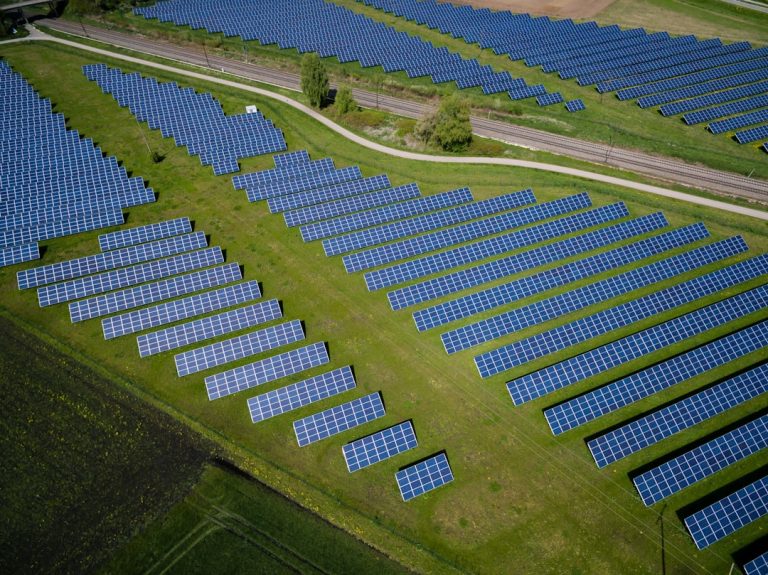
The veterinary profession is a vital component of the healthcare system, dedicated to the well-being of animals and, by extension, the health of humans. Veterinarians are trained professionals who diagnose and treat a wide range of animal ailments, from common illnesses in household pets to complex diseases in livestock. Their expertise extends beyond mere medical treatment; they also play a crucial role in preventive care, public health, and animal welfare.
The profession has evolved significantly over the years, adapting to advancements in medical technology and changing societal attitudes toward animal care. As society increasingly recognizes the importance of animal health in relation to human health, the role of veterinarians has become more prominent and multifaceted. Veterinarians work in various settings, including private practices, research institutions, zoos, and government agencies.
Their responsibilities can vary widely depending on their area of focus, but all share a common goal: to ensure the health and well-being of animals. This commitment to animal care is not only a professional obligation but also a personal passion for many in the field. The profession attracts individuals who are not only skilled in science and medicine but also possess a deep empathy for animals and a desire to advocate for their welfare.
As the veterinary field continues to grow and evolve, it remains an essential part of both animal care and public health.
Key Takeaways
- The veterinary profession plays a crucial role in the health and well-being of animals, as well as in public health.
- Factors contributing to the growth of veterinarian occupations include the increasing pet ownership, advancements in veterinary medicine, and the growing awareness of animal welfare.
- Education and training requirements for veterinarians include obtaining a Doctor of Veterinary Medicine (DVM) degree and obtaining a state license to practice.
- Specializations and career opportunities within the veterinary field include small animal practice, large animal practice, research, public health, and academia.
- The job outlook for veterinarians is expected to be favorable, with a competitive salary, but the profession also comes with challenges such as emotional stress and long working hours.
Factors Contributing to the Growth of Veterinarian Occupations
Several factors have contributed to the growth of veterinarian occupations in recent years. One significant driver is the increasing pet ownership rates across the United States.
S.
households own a pet, which translates to around 85 million families. This surge in pet ownership has led to a greater demand for veterinary services, as pet owners seek regular check-ups, vaccinations, and emergency care for their beloved animals. The emotional bond between humans and their pets has fostered a culture where animal health is prioritized, resulting in more frequent visits to veterinary clinics.
In addition to the rise in pet ownership, advancements in veterinary medicine have expanded the scope of practice for veterinarians. Innovations in diagnostic tools, surgical techniques, and treatment options have allowed veterinarians to provide more comprehensive care than ever before. For instance, the development of advanced imaging technologies such as MRI and CT scans has revolutionized how veterinarians diagnose conditions that were once difficult to detect.
Furthermore, the growing awareness of zoonotic diseases—those that can be transmitted from animals to humans—has underscored the importance of veterinary care in safeguarding public health. As society becomes more aware of these interconnected health issues, the demand for qualified veterinarians continues to rise.
Education and Training Requirements for Veterinarians

Becoming a veterinarian requires a significant investment in education and training. The path typically begins with obtaining a bachelor’s degree, often with a focus on biological sciences or animal science. While there is no specific undergraduate major required for admission into veterinary school, coursework in subjects such as biology, chemistry, physics, and mathematics is essential.
Many aspiring veterinarians also gain practical experience through internships or volunteer work at animal shelters, veterinary clinics, or farms, which not only enhances their application but also provides valuable hands-on experience. After completing an undergraduate degree, candidates must attend an accredited veterinary school, which usually takes four years to complete. The curriculum at veterinary schools is rigorous and includes both classroom instruction and clinical training.
Students learn about various aspects of animal health, including anatomy, pharmacology, pathology, and surgery. In addition to traditional classroom learning, students participate in clinical rotations where they gain practical experience treating animals under the supervision of licensed veterinarians. Upon graduation, candidates earn a Doctor of Veterinary Medicine (DVM) degree and must pass the North American Veterinary Licensing Examination (NAVLE) to practice legally as veterinarians.
Specializations and Career Opportunities within the Veterinary Field
| Specialization | Career Opportunities |
|---|---|
| Small Animal Medicine | Veterinary clinics, animal hospitals, emergency care facilities |
| Large Animal Medicine | Equine practices, livestock production facilities, agricultural companies |
| Exotic Animal Medicine | Zoos, wildlife rehabilitation centers, exotic pet clinics |
| Veterinary Surgery | Specialty surgical centers, university veterinary hospitals, private practices |
| Veterinary Pathology | Research institutions, diagnostic laboratories, pharmaceutical companies |
The veterinary field offers a wide array of specializations that allow practitioners to focus on specific areas of interest or expertise. Some veterinarians choose to work with companion animals—such as dogs and cats—while others may specialize in exotic animals or livestock. Within these categories, there are numerous subspecialties that veterinarians can pursue.
For example, some may focus on internal medicine, surgery, dermatology, or emergency care. Others may choose to work in fields such as veterinary pathology or radiology. In addition to clinical practice, veterinarians have opportunities in research, education, and public health.
Those interested in research may work in laboratories studying animal diseases or developing new treatments and vaccines. Academic veterinarians often teach at veterinary schools or conduct research while training the next generation of veterinarians. Public health veterinarians play a crucial role in monitoring zoonotic diseases and ensuring food safety through inspections of livestock and food production facilities.
The diversity of career paths available within the veterinary profession allows individuals to tailor their careers according to their interests and skills.
Job Outlook and Salary Expectations for Veterinarians
The job outlook for veterinarians is promising, with employment opportunities expected to grow significantly over the next decade. According to the U.S. Bureau of Labor Statistics (BLS), employment for veterinarians is projected to grow by 19% from 2021 to 2031, which is much faster than the average for all occupations.
This growth is driven by factors such as increased pet ownership, advancements in veterinary medicine, and heightened awareness of animal welfare issues. As more people recognize the importance of regular veterinary care for their pets and livestock, the demand for qualified veterinarians will continue to rise. In terms of salary expectations, veterinarians can expect varying compensation based on their area of specialization, geographic location, and years of experience.
According to BLS data from May 2022, the median annual wage for veterinarians was approximately $100,370. However, those working in specialized fields or in metropolitan areas may earn significantly higher salaries. For instance, veterinarians specializing in surgery or internal medicine often command higher wages due to their advanced training and expertise.
Additionally, veterinarians employed by research institutions or government agencies may also receive competitive salaries along with benefits such as student loan repayment programs.
Challenges and Responsibilities of Being a Veterinarian

While being a veterinarian can be incredibly rewarding, it also comes with its share of challenges and responsibilities. One significant challenge is the emotional toll that comes with caring for sick or injured animals. Veterinarians often face difficult decisions regarding treatment options and end-of-life care for pets that are suffering from terminal illnesses.
The grief experienced by pet owners can be profound, placing additional emotional strain on veterinarians who must navigate these sensitive situations with compassion and professionalism. Moreover, the profession can be physically demanding. Veterinarians spend long hours on their feet while performing surgeries or conducting examinations.
The work can be unpredictable; emergencies can arise at any time, requiring veterinarians to be available outside regular office hours. Additionally, managing a veterinary practice involves administrative responsibilities such as record-keeping, billing, and staff management—tasks that can detract from time spent with patients. Balancing these various responsibilities while maintaining high standards of care can be challenging but is essential for success in the field.
The Role of Veterinarians in Public Health and Animal Welfare
Veterinarians play an integral role in public health by monitoring zoonotic diseases that can affect both animals and humans. Their expertise is crucial in identifying potential outbreaks and implementing preventive measures to protect communities from diseases such as rabies or avian influenza. Public health veterinarians often collaborate with government agencies and organizations like the Centers for Disease Control and Prevention (CDC) to develop strategies for disease surveillance and control.
In addition to their public health responsibilities, veterinarians are advocates for animal welfare. They work tirelessly to promote humane treatment practices and educate pet owners about responsible pet ownership. This includes advocating for spaying and neutering programs to control pet populations and working with shelters to improve adoption rates for homeless animals.
Many veterinarians also engage in outreach efforts within their communities to raise awareness about animal welfare issues and promote best practices for caring for pets.
The Future of Veterinarian Occupations in the USA
As society continues to evolve in its understanding of animal health and welfare, the future of veterinarian occupations appears bright. The increasing recognition of the interconnectedness between human health and animal health will likely lead to further growth within the profession. With advancements in technology paving the way for innovative treatments and diagnostic tools, veterinarians will be better equipped than ever to provide high-quality care.
Moreover, as public awareness regarding animal welfare issues grows, so too does the demand for compassionate professionals who can advocate for animals’ rights and well-being. The diverse career paths available within veterinary medicine ensure that individuals can find fulfilling roles that align with their passions while contributing positively to society at large.
According to a recent article on Careers in the USA, veterinarians are among the fastest growing occupations in the country. This is great news for those interested in pursuing a career in animal healthcare. The article highlights the increasing demand for veterinary services and the opportunities available for those looking to enter this field. For more information on other fast-growing occupations in the USA, check out the website’s sample page.
FAQs
What is the job outlook for veterinarians in the USA?
The job outlook for veterinarians in the USA is very positive, with the occupation expected to grow much faster than the average for all occupations. The demand for veterinary services is expected to continue to increase due to the growing pet population and the increasing importance of pets in people’s lives.
What are the main responsibilities of veterinarians?
Veterinarians are responsible for diagnosing and treating injuries and illnesses in animals, performing surgeries, prescribing medication, providing vaccinations, and offering general health and wellness advice for pet owners. They may also work in research, food safety, or public health.
What are the educational requirements to become a veterinarian?
Becoming a veterinarian requires a Doctor of Veterinary Medicine (DVM) degree from an accredited veterinary college, as well as a state license. Admission to veterinary programs is highly competitive, and candidates typically need a strong background in biology, chemistry, and animal science.
What are the work settings for veterinarians?
Veterinarians can work in a variety of settings, including private veterinary practices, animal hospitals, research laboratories, zoos, and government agencies. Some may also work in food safety and inspection, public health, or academia.
What is the average salary for veterinarians in the USA?
According to the U.S. Bureau of Labor Statistics, the median annual wage for veterinarians in the USA was $99,250 in May 2020. The highest 10 percent earned more than $164,490, while the lowest 10 percent earned less than $63,580.






